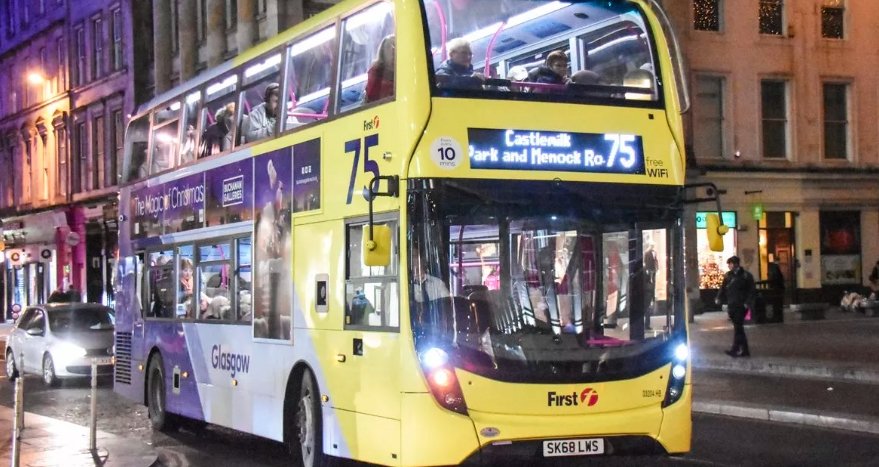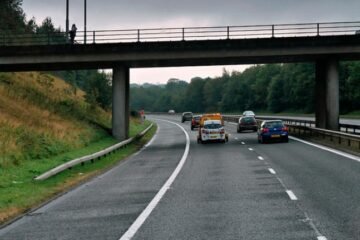A new campaign is calling for a radical overhaul of the bus network in Strathclyde, Scotland, to make it more affordable, accessible and environmentally friendly. The campaign, called Better Buses for Strathclyde, is backed by trade unions, environmental groups and public transport advocates who want to see the region follow the example of Greater Manchester, which recently retook control of its buses after decades of deregulation.
Why buses matter for social and environmental justice
The campaign argues that buses are essential for people on lower incomes, who rely on them to access jobs, education, health care and other services. Buses also have the potential to reduce greenhouse gas emissions and air pollution by replacing car journeys. However, the current system of private operators is failing to provide a reliable, affordable and integrated service that meets the needs of passengers and the planet.
According to Ellie Harrison of Get Glasgow Moving, one of the groups behind the campaign, public transport should be treated as an essential service like education or health. She said: “We need a complete rebrand of the bus network across Strathclyde. It shouldn’t be First running this bus, Stagecoach running this – we need everything brought together and unified.”
How Greater Manchester inspired the campaign
The campaign is inspired by the recent decision of Greater Manchester to bring its buses back under public control. The region launched the Bee Network, which aims to create a unified and integrated transport system that includes buses, trams and bikes. The network also offers capped fares and a contactless payment system that works across all modes of transport.

Harrison said that Greater Manchester’s example shows what is possible with political will and public support. She said: “The only way we can do something like this here is by doing something as ambitious as what Greater Manchester is doing. People in Greater Manchester can see it – the buses have literally changed colour and it’s easy to get a ticket on all the transport modes.”
What the campaign wants to see happen
6
The campaign wants Strathclyde Partnership for Transport (SPT), the regional transport authority, to use the new powers granted by the Transport (Scotland) Act 2019 to regulate the private bus companies and set up a new publicly-owned operator for the region. The campaign believes that this would allow SPT to plan and deliver a better bus service that meets the needs of passengers and the environment.
Harrison explained: “What we’re campaigning for is ‘public control’ of the bus network as what we want SPT to do is a combination of re-regulating the existing private bus companies and setting up a new publicly-owned operator for the region which can take over more of the network incrementally once services are regulated.”
The campaign has launched a petition that has been signed by thousands of people. It also has the backing of several organisations, such as the Scottish Trades Union Congress and Friends of the Earth Scotland.
How public control can improve bus services
The campaign claims that public control can improve bus services in several ways, such as:
- Reducing fares and introducing a simple and consistent pricing system across the region
- Expanding network coverage and increasing service frequency and reliability
- Improving accessibility and safety for all passengers, especially those with disabilities or mobility issues
- Enhancing environmental standards and reducing carbon emissions and air pollution
- Creating more jobs and better working conditions for bus workers
- Increasing public accountability and transparency in decision-making and spending
The campaign also argues that public control can generate more revenue for public transport by attracting more passengers and reducing leakage of profits to private shareholders.
How the Scottish Government can support the campaign
The campaign urges the Scottish Government to support its aims and help SPT achieve public control of buses. The campaign says that the government has set ambitious climate targets, such as reducing car kilometres by 20% by 2030 and reaching net zero emissions by 2045, but has not grasped the scale of transformation that is necessary.
Harrison said: “We only have seven years to reach those targets. I really don’t think the Scottish Government have grasped the scale of the transformation that’s necessary. That’s why we’re pushing them to do this.”
The campaign calls on the government to provide more funding and guidance for SPT to implement public control. It also asks the government to treat public transport as a human right and an essential service that should be accessible and affordable for everyone.
What happens next?
The campaign is optimistic that it can win its case and persuade SPT to take action. SPT is currently developing its Strathclyde Regional Bus Strategy, which will set out how transport in Strathclyde must evolve in the next 15 years. SPT is expected to make a decision on which powers to use under the Transport (Scotland) Act 2019 by March 2024.
Harrison said: “This is a once-in-a-generation opportunity. We have been watching SPT carefully over the last few years and know this is the right time to ramp up the pressure on them. We will be there ready to lobby board members and submit our petition, signed by thousands, to demonstrate the sheer weight of public support for them taking our buses back into public control.”
Will SPT listen to the campaign and take the bold step of bringing buses back under public control? Will the Scottish Government support SPT and provide the necessary funding and guidance? Will Strathclyde see a transformation of its bus network that benefits passengers and the planet? The answers to these questions will determine the future of public transport in the region.


















